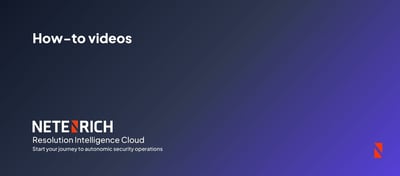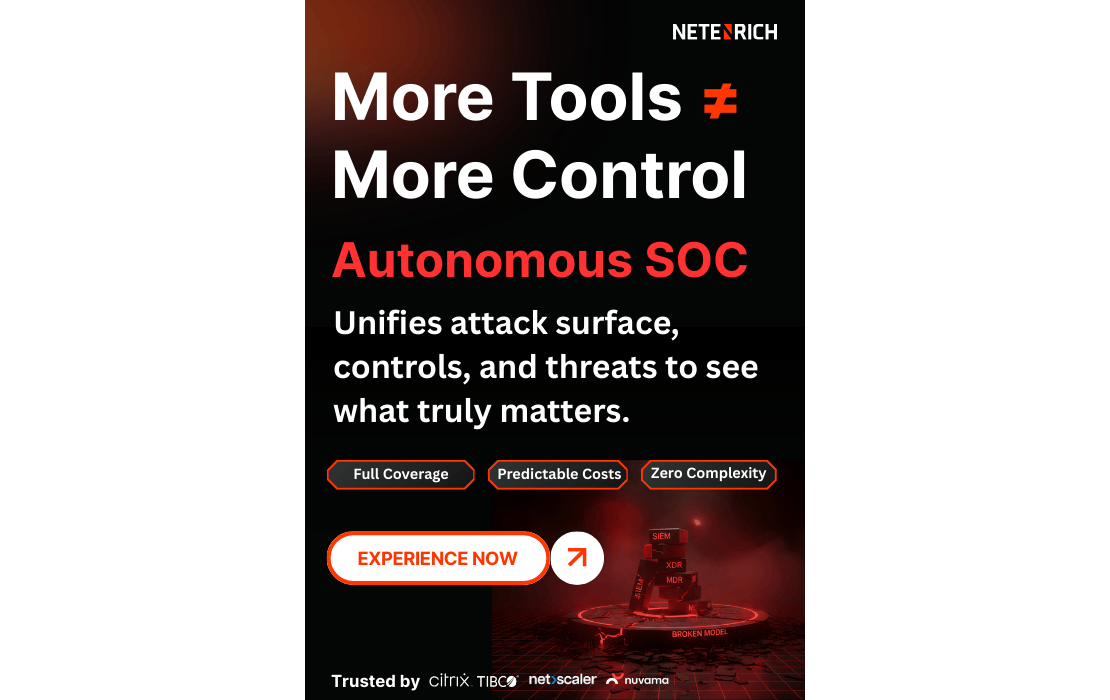How to Modernize IT Operations for Resolving Digital Experience
Published on July 6, 2021 | Last updated on September 23, 2025 | 4 min read

With digital transformation being the goal, learn how to modernize IT operations for improved digital customer experience and IT productivity.
 Digital transformation is a clear mandate for IT this year. Watch this webinar to understand the changes you need to drive in your ITOps for complete visibility of customer experience while reducing the workload for your team.
Digital transformation is a clear mandate for IT this year. Watch this webinar to understand the changes you need to drive in your ITOps for complete visibility of customer experience while reducing the workload for your team.
Chris Cramer, Director of Solutions at Netenrich, and Kiran Malarouthu, Solutions Architect at Netenrich held a webinar recently entitled, ‘Modern Ops to Resolve Digital Experience’. During this 30-mins webinar, they discuss how COVID-19 has created changes for businesses, especially for midsize companies and enterprises.
With the estimated investment of $6.8T in digital transformation by 2023 [1], the competitive advantage lies in truly being able to understand ‘what does it mean to modernize?’.
The answer to this could vary for every business – be it retail, financial institutions, or school districts but they do have lessons to learn from different industries and apply.
Interesting fact:
Before the COVID crisis, Khan Academy had roughly 18 million users coming in every month. This number doubled after the crisis hit and with it the server costs doubled as well. [2]
With the need to modernize ITOps being the core topic, Chris and Kiran discuss a step-by-step guided approach towards it and tell you how Netenrich Resolution Intelligence Cloud™ platform helps you improve digital user experiences now and for the future.
In case you missed this intriguing conversation, here’s a link to watch the webinar recording, read through the summary below to know what all has been covered in the webinar.
Why modernization of digital customer experience is needed?
There is a significant shift in the customer behavior and expectations because of the pandemic and ongoing digital transformation. As the users move from a website only or brick-and-mortar only set up to a hybrid model of consumption, there is a need for modernization of experience at every level of the customer journey.
The traditional model of operations restricts ITOps to keeping the lights on only and ensuring the infrastructure is up and running, always. However, this needs to change as 74% of the budget simply goes into keeping the lights on yet IT is not the first to know about the outages.
To deliver the digital experience necessary to remain competitive, enterprises must monitor top-down, go beyond infrastructure, and make their business observable.
~Gartner
So, how do we prepare for this digital transformation? The key is to keep the customer at the center of every experience. Keeping this in mind, Chris shares three important requirements to keep in mind for a successful digital transformation implementation. (Refer to the image below)
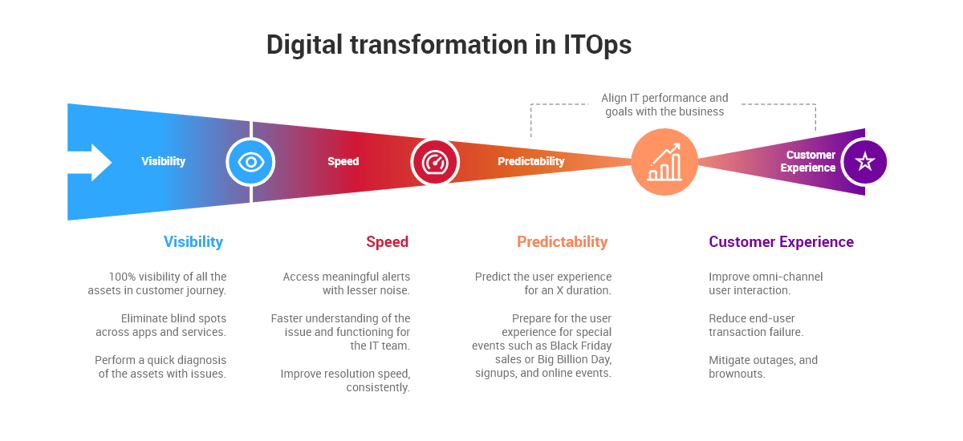
Once you have such a view of digital experience, you get the following benefits:
- It gives you and your IT team an aggregate view that helps save time on monitoring issues.
- It gives you the capacity to detect short-term issues as well as help predict the future.
- It gives you more context around the issues.
How to establish full visibility into the digital experience?
Bringing full visibility into the user experience requires going beyond what you can see and find out what you can’t see. It starts with understanding how the user experience looks like for a business and monitor each step closely to detect the blind spots. Here’s how to do it:
-
Eliminate blind spots and unify data sources
Traditionally, the core components of user experience (such as LAN, DNS, ISP, Cloud, applications, microservices, datacenters, PaaS, etc.) are monitored by NOC teams, and that too on a very surface level. They’re unable to identify if a certain application is down/degraded, the numbers of real-time impacted users, or the nature of an issue. This renders them unable to identify the exact cause of the issue and slows down resolution. A top-down approach helps monitor each aspect of the user experience journey. Using this method, you will be able to identify what you can’t see and have a 360° view of a user, capturing which is challenging with traditional ITOps.
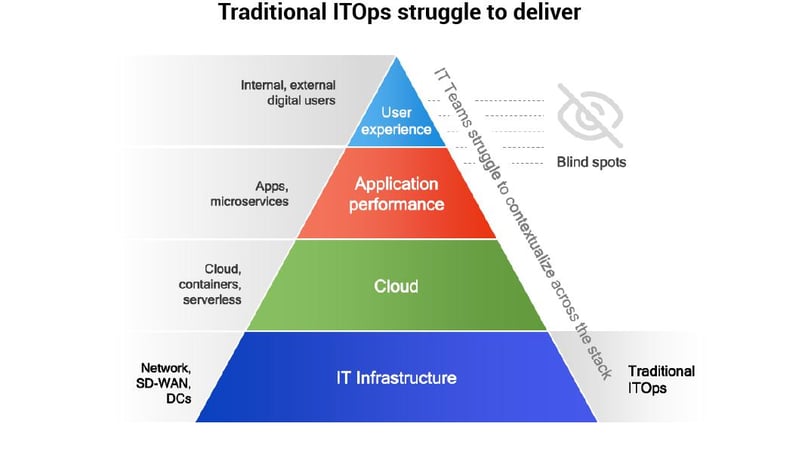
-
Reduce dependency of NOC teams on app support teams
NOC teams are unable to get to the root cause by themselves. They rely on application support teams for even the basic resolution issues. This puts them in a position where they deal with a lot of blind spots and delay especially because of the varying paths users take in their digital experience. Immediate access to information with enough depth and context helps reduce time to resolve issues, as well enables your team to predict and prevent issues.
-
Cut down alert fatigue and improve the quality of insights
The current monitoring systems are configured to send a lot of alerts whenever an outage occurs. Often, the NOC teams lack enough staff to manage these alerts. Moreover, all alerts are not created equally i.e. they lack contextual intelligence to aid the resolution. Only a handful of the alerts are meaningful enough. Now, this is akin to finding a needle in a haystack. A lot of this burden is taken off your team’s plate with the help of automation and contextual intelligence that adapts to your business’s needs. While automation helps remove false positives, contextual intelligence empowers your team with the right information at the right time to resolve the right issues.
How to add speed and predictability to your ITOps?
Business these days operate in dynamic environment. Contrarily, they entail more effort because of more data silos. This nature of operation causes a lack of insights across teams and poor triage, ultimately impacting the end-user experience. Here’s how Netenrich helps you resolve this issue:
-
Reduce noise to bring focus to the right issues
When several tools and integrations work in an environment, they generate data in their pre-defined way. Connecting dots as such is often a demanding task, even impossible at times. At Netenrich, this problem has been resolved with the usage of AIOps in the Resolution Intelligence platform. The platform works as an intermediary between your tools and the ticketing system. It takes in all the alerts and news, removes the white noise, and finally identifies the right information and connects it to the root cause.
-
Provide real-time consolidated contextual intelligence
Information on its own does nothing. Context is what creates the magic. By establishing the relationship of alerts with the root cause, and thereby related data and news, you get contextual intelligence that helps your security engineers solve issues faster and more productively. With this kind of intelligence working for you, you can help your engineers with just the right information needed for quick remediation. With the Netenrich Resolution Intelligence CloudTM platform, we have seen the time to act (detection > investigation > response) coming down from the usual 45 mins or an hour to only 5 mins.
-
Align your resources to action-focused tasks only
While AI/ML tools will act as a bridge between data streams, tools, applications, and more, to keep 24×7 vigilance across your security posture still needs human intelligence. Bringing more people on the board is no solution as it adds to overheads and more data silos. Netenrich Resolution Intelligence Platform resolves this by combining machine intelligence with human intelligence to deliver 100% actionable insights and focused contextualization and efficient collaboration. This ensures you miss nothing and focus on only what matters.
Learn about the true costs of existing tools and the benefits of consolidating them
Use our Modern IT Ops ROI calculator to see how quickly you can modernize for: 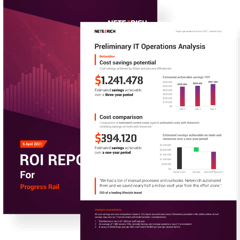
- Substantial cost avoidance
- Exponential productivity improvements
- Faster payback period
- Higher User Satisfaction
More on this in the webinar. Watch the full webinar recording to understand why traditional ITOps are no longer sustainable for digital customer experience and how to achieve new benchmarks.
[1] IDC FutureScape: Worldwide Digital Transformation 2021 Predictions.
[2] Academy, Khan. Khan Academy request for donations. YouTube, 8 Mar. 2020.
Related Articles
Subscribe for updates
The best source of information for Security, Networks, Cloud, and ITOps best practices. Join us.


